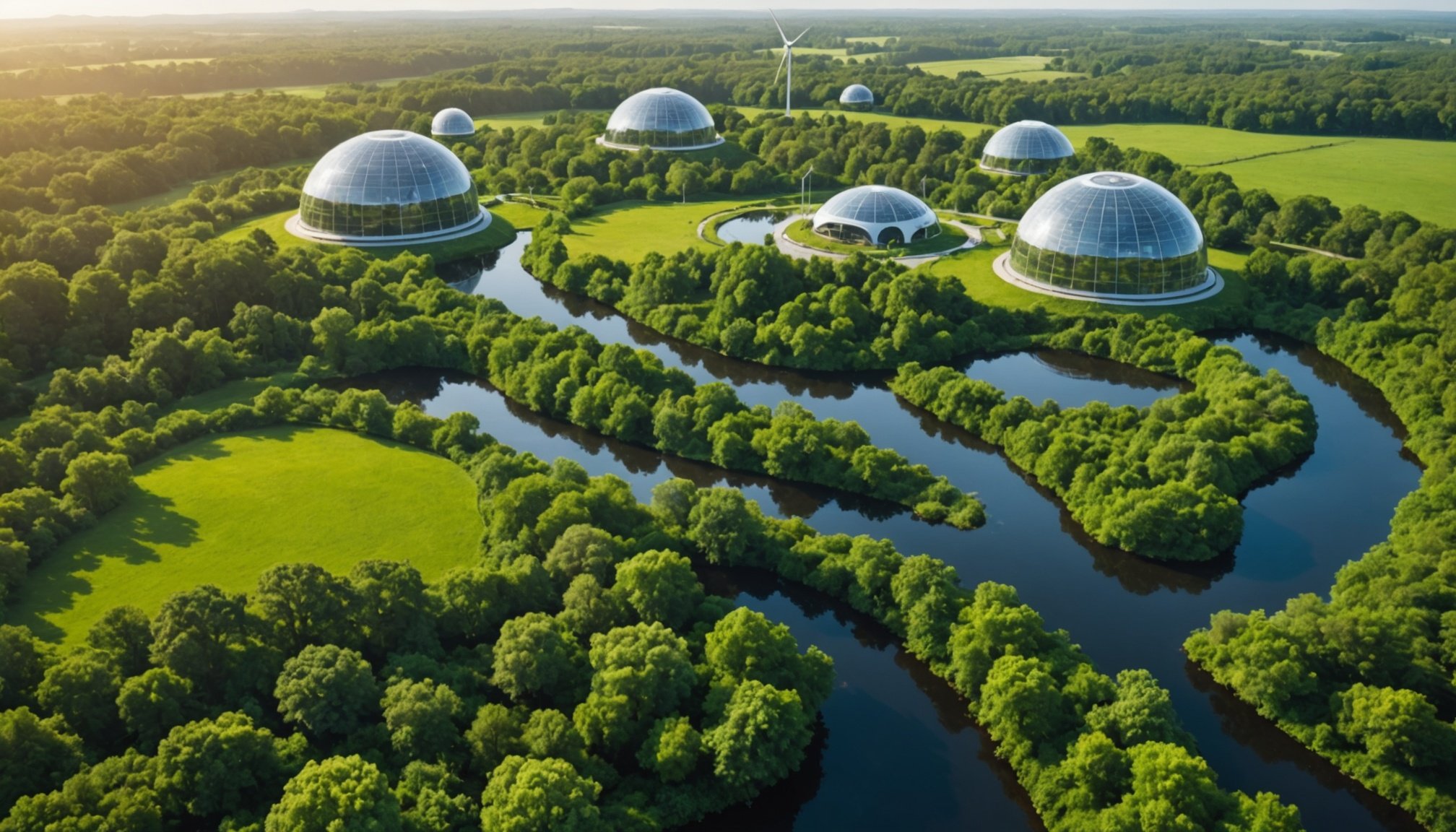Transforming Environmental Monitoring: Cutting-Edge AI Strategies for Enhanced Sustainability Insights
In the face of escalating environmental challenges, the need for innovative and effective monitoring strategies has never been more pressing. The integration of artificial intelligence (AI) and other advanced technologies is revolutionizing the field of environmental monitoring, providing unprecedented insights and driving sustainable solutions. Here, we delve into the transformative power of AI in environmental monitoring, exploring its applications, benefits, and the future it promises.
The Role of AI in Environmental Monitoring
AI is no longer just a buzzword; it is a game-changer in the realm of environmental monitoring. By leveraging AI, we can collect, analyze, and interpret vast amounts of environmental data in real time, enabling swift and informed decision-making.
In parallel : Harnessing AI in Advertising: Proven Expert Techniques for Mastering Campaign Management
Data Collection and Analysis
One of the primary challenges in environmental monitoring is the sheer volume of data that needs to be collected and analyzed. AI-powered systems can handle this task with ease, processing data from various sources such as sensors, satellites, and IoT devices. For instance, the Internet of Things (IoT) allows for continuous monitoring of ecosystems, tracking parameters like temperature, humidity, and water quality. This data is then analyzed using machine learning algorithms to identify patterns and anomalies that might indicate environmental threats, such as the arrival of invasive species or sudden pollution events[1].
Predictive Analytics for Proactive Management
Predictive analytics, a subset of AI, is crucial for proactive environmental management. By analyzing historical and real-time data, AI systems can predict future environmental changes and potential threats.
This might interest you : Creating a Robust and Trustworthy Distributed Ledger for Seamless Financial Transactions
Early Detection of Threats
The Gabon’s “Forest Foresight” system is a compelling example of AI-driven predictive analytics in action. This platform uses satellite data and AI to detect illegal deforestation activities up to six months before they occur, providing critical early warnings to authorities. This proactive approach enables timely interventions, significantly reducing the impact of deforestation and contributing to the preservation of biodiversity[2].
Real-Time Monitoring for Immediate Action
Real-time monitoring is another area where AI excels, allowing for immediate action in response to environmental changes.
Surveillance and Alert Systems
AI-powered surveillance systems can detect illegal activities such as logging, hunting, or deforestation in real time, sending alerts to local authorities. For example, the Rainforest Connection uses smartphones to detect the sound of chainsaws and alert authorities, enabling rapid response to protect sensitive areas[1].
Collaboration and Governance
Effective environmental monitoring and management require robust collaboration and governance structures.
Multi-Stakeholder Collaboration
The deployment of Forest Foresight in Gabon illustrates the importance of collaboration between government agencies, international organizations, and local stakeholders. The agreement between the Gabonese government and the World Wildlife Fund (WWF) defines the roles and responsibilities of various entities, ensuring a coordinated effort in monitoring and managing the country’s forests[2].
Environmental Sustainability and Climate Change
AI-driven environmental monitoring is pivotal in the fight against climate change and the preservation of environmental sustainability.
Climate Change Mitigation
AI can help in predicting and managing the impacts of climate change. For instance, AI systems can analyze satellite data to detect temperature variations in coral reefs, alerting authorities to potential bleaching events. This allows for the adjustment of human activities to minimize negative impacts on biodiversity[1].
Practical Insights and Actionable Advice
Here are some practical insights and actionable advice for businesses and organizations looking to leverage AI for environmental sustainability:
Implementing IoT Solutions
- Use IoT sensors to collect real-time data on environmental parameters such as air quality, water quality, and soil health.
- Integrate AI algorithms to analyze this data and identify potential threats or changes in the environment.
Leveraging Predictive Analytics
- Utilize predictive models to forecast environmental changes and potential threats, enabling proactive management strategies.
- Collaborate with experts in AI and environmental science to develop and refine these models.
Ensuring Data Quality
- Ensure data accessibility and consistency by developing standardized formats and protocols for data collection and analysis.
- Address data privacy concerns by implementing robust security measures to protect sensitive environmental data[4].
Challenges and Future Directions
While AI offers tremendous potential for environmental monitoring, there are several challenges that need to be addressed.
Data Accessibility and Quality
One of the significant challenges is the accessibility and quality of environmental data. Many datasets are fragmented, confidential, or lack standardization, hindering their effective use in AI models. Efforts to develop infrastructure for data federation and standardization are crucial for overcoming these challenges[4].
Ethical Considerations
AI systems must be designed with ethical considerations in mind, ensuring that they do not exacerbate existing environmental inequalities or neglect the needs of vulnerable populations.
The integration of AI in environmental monitoring is a transformative step towards achieving sustainability and mitigating the impact of climate change. By leveraging AI, we can collect and analyze vast amounts of data, predict future environmental changes, and take proactive measures to protect our planet.
Key Takeaways
- AI-driven monitoring enables real-time surveillance and predictive analytics, facilitating swift and informed decision-making.
- Collaboration and governance are essential for the effective implementation of AI-powered environmental monitoring systems.
- Addressing challenges such as data accessibility and quality, as well as ethical considerations, is crucial for the long-term success of these systems.
As we move forward, it is clear that AI will play a central role in shaping the future of environmental sustainability. By embracing these technologies and addressing the associated challenges, we can create a more sustainable and environmentally conscious world.
Table: Comparative Analysis of AI-Powered Environmental Monitoring Systems
| System | Key Features | Benefits | Challenges |
|---|---|---|---|
| Forest Foresight | Uses satellite data and AI to detect illegal deforestation. | Early detection of deforestation, proactive management. | Requires robust collaboration and data standardization. |
| IoT Sensors | Collects real-time data on environmental parameters. | Continuous monitoring, swift response to changes. | Data quality and accessibility issues. |
| Predictive Analytics | Forecasts environmental changes using historical and real-time data. | Proactive management, reduced environmental impact. | Requires high-quality and consistent data. |
| Rainforest Connection | Detects illegal logging activities using smartphones. | Rapid response to protect sensitive areas. | Limited geographical coverage, dependency on technology. |
Detailed Bullet Point List: Benefits of AI in Environmental Monitoring
-
Enhanced Data Collection:
-
Continuous monitoring of environmental parameters.
-
Real-time data collection from various sources such as sensors, satellites, and IoT devices.
-
Advanced Data Analysis:
-
Use of machine learning algorithms to identify patterns and anomalies.
-
Predictive analytics to forecast future environmental changes.
-
Proactive Management:
-
Early detection of threats such as deforestation, pollution, and climate change impacts.
-
Swift and informed decision-making based on real-time data.
-
Improved Collaboration:
-
Multi-stakeholder collaboration facilitated by AI-driven systems.
-
Clear definition of roles and responsibilities among stakeholders.
-
Sustainability Insights:
-
Actionable insights for sustainable practices and environmental conservation.
-
Long-term sustainability through proactive and data-driven management.
-
Climate Change Mitigation:
-
Prediction and management of climate change impacts.
-
Adjustment of human activities to minimize negative impacts on biodiversity.
Quotes
-
“C’est un système qui permet, en moyenne six mois avant, de détecter toute activité de déforestation illégale et d’alerter les autorités compétentes. Il contribue également à mesurer les efforts de restauration des écosystèmes, ce qui en fait un levier majeur dans la lutte contre le changement climatique.” – Nathalie Nyare Essima, Directrice nationale du WWF-Gabon[2].
-
“L’IoT est un véritable atout pour suivre l’évolution des espèces menacées. En effet, les technologies GPS ou les balises RFID permettent de suivre en temps réel les mouvements et le comportement des animaux menacés.” – Journal du Net[1].
By embracing AI and other advanced technologies, we are not just monitoring the environment; we are transforming our approach to sustainability, ensuring a more resilient and environmentally conscious future for all.











